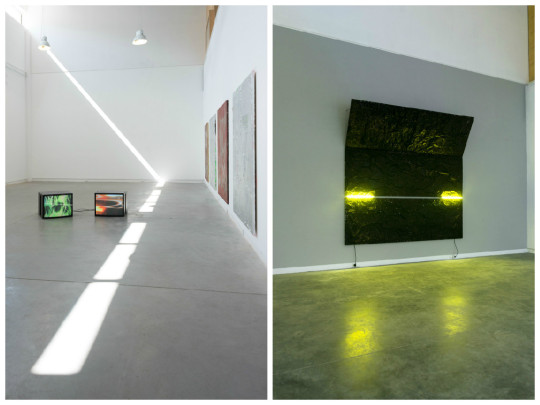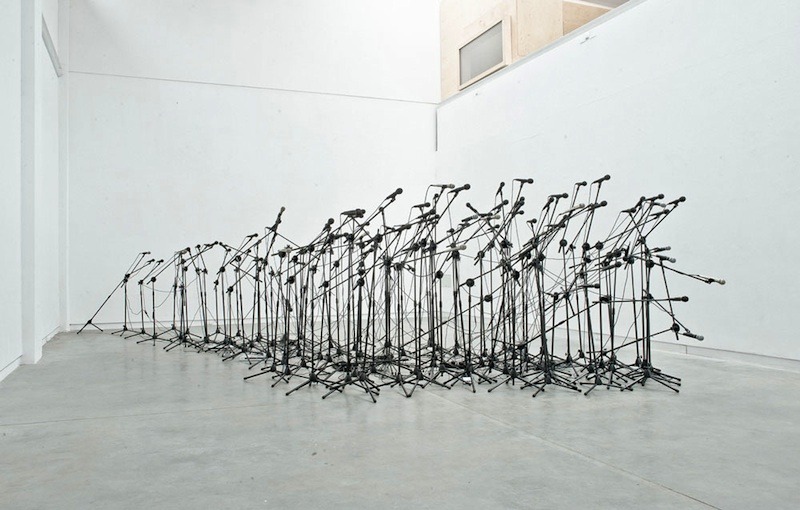Happening: How did you start the gallery?

Left to right: Florian & Michael Quistrebert, Voyagers Go Overlight, 2014; Angelika Markul, Showroom, exhibition view, 2014
In 2009 I was invited to move my gallery to the Praga district. We moved with Piktogram gallery into an old factory in this big post-industrial space. As well as a nice open gallery, we have a residential space and social areas, it means that from time to time when we have an artist working on an exhibition we can invite them to stay in the lead up.
Which artists did you begin working with?
I did a lot of research before starting the gallery, and I thought a lot about the direction. I decided to start following unknown artists, I met Radek Szlaga and Honza Zamojski, they started out with me unknown, but we grew up together. All my artists are very different, their practices range from video, to painting, light installations and poetry. For me it was interesting to discover artists who use different media, Konrad Smoleński for example uses sound in his works, he is a musician and a visual artist.

Konrad Smoleński, IT’S ON, exhibition view, 2012
Do you represent mostly Polish artists?
Yes I represent Polish artists because they really need this kind of support. I sometimes work with artists from abroad but normally it is only once a year when we put on an international show in the gallery. In Poland it is still not easy to convince collectors to support young artists, but now we have started doing fairs, this brings more visibility to Polish artists abroad.
Have you seen progression in the Polish market since you have opened your gallery?
Yes, and it’s going pretty fast too! When I started there were only a few galleries, the progression was slow, but now every year there are new galleries and galleries choosing to move to Warsaw.

Gorilla Goes Bananas!, exhibition view, 2013
Are most of your collectors from Poland?
We have many collectors from Belgium, France, Germany… but mainly we attract Polish collectors.
Do you do a lot of fairs in order to meet these European collectors?
We do two or three a year, it is very expensive but sometimes we receive support from other institutes, here at ARCO we have support from the Polish institute in Madrid. We are also lucky enough to receive help for big projects such as Transatlantic which we organized for the first edition of Frieze New York. Two of my artists spent ten days on a cargo ship and prepared artworks that they then presented at the fair. It was a real adventure for us, born of the question, what can we offer to New Yorkers? We decided to dig deep into our history of Polish immigration, connected to the story of one of the artists, his parents had moved to the United States in the late 80s. People still ask us, “Oh were you the guys who did that project at Frieze?”, it was something very recognizable.
This journey was completed in a studio in Brooklyn and we then published a paper with documentation from the journey, it included an interview between the two artists. On the boat there was no news and no internet, they had no idea what was going on in the outside world. They imagined the world wasn’t there anymore or what if Poland no longer existed.
Speaking of immigration, do you find many Polish artists leave for more developed art markets?
Yes, because they are very curious. It was impossible in the past, we were contained, but now our artists are cosmopolitan, they travel, they speak different languages.









